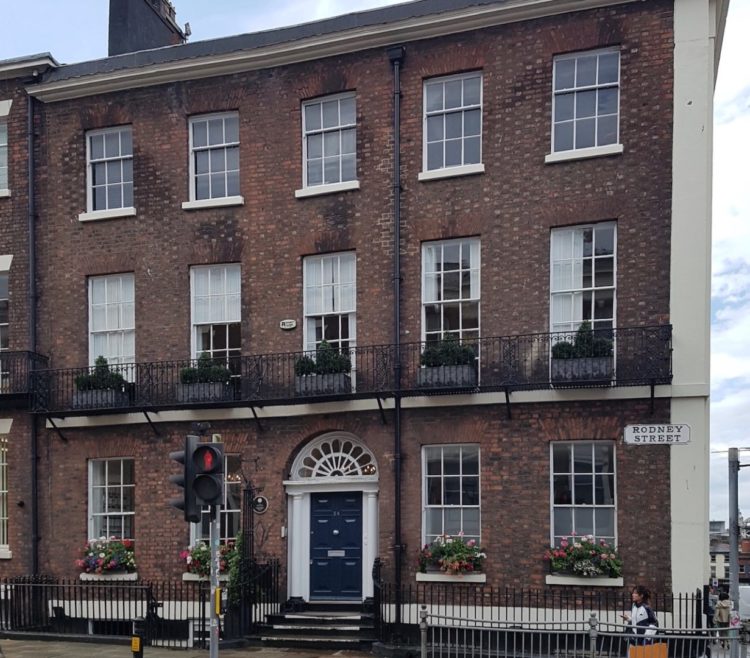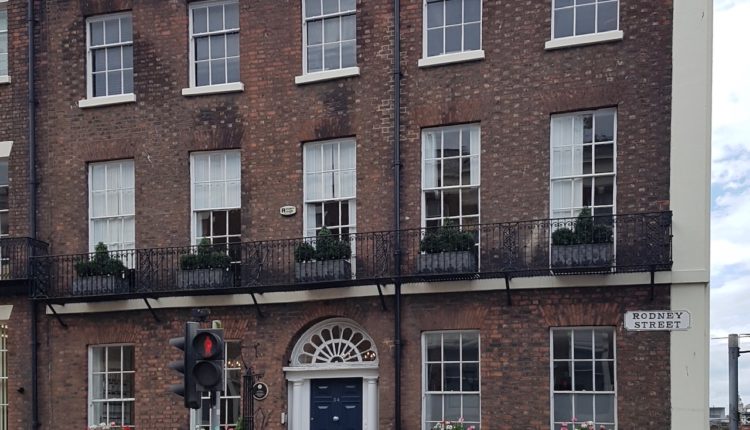The 18th century, the Grade II-Listed 34 Rodney Street was the birthplace of railway pioneer Henry Booth, founder of The Liverpool and Manchester Railway Company. Tony McDonough reports

A Georgian townhouse in Liverpool city centre offering more than 4,800 sq ft of office space is on the market with a price tag of £1.2m.
Built in the late 18th century, the Grade II-Listed 34 Rodney Street was the birthplace of railway pioneer Henry Booth, founder and director of The Liverpool and Manchester Railway Company. A plaque commemorating this is displayed at the front of the property.
The building is located in a prominent position and occupies a corner location on the western side of the street at the junction between Rodney Street and Hardman Street. It falls within the Rodney Street Conservation Area.
Spanning across five floors, the building boasts many ornate original period cornice and ceiling features. Currently a beauty and skincare salon is located on the ground floor and the first floor has been divided into private offices and meeting rooms.
The second and third floors comprise a luxury three-bedroom duplex apartment with a fully fitted kitchen, three en-suite bathrooms and a spacious lounge. Hitchcock Wright & Partners is the sole commercial agent marketing the building.
Brian Ricketts, partner at the firm, said: “I am delighted to bring to market this period property which would offer a fantastic head office for a medium to large business that requires a city centre location.
“The building is in excellent condition, both inside and out, and has lots of potential. We expect interest to be high, with many prospective buyers interested in owning a piece of Liverpool history.”
Henry Booth was born in April 1788 at the house and was a well known Liverpool corn merchant, businessman and engineer. He was a “vigorous proponent” of the Liverpool and Manchester Railway Company which built the first inter-city railway in the world.
Booth proposed the basic design of the first multi-tubular boiler invented by Marc Sequin and used on the world famous Stephenson’s Rocket steam locomotive built in late 1829 for the L&M Railway.

